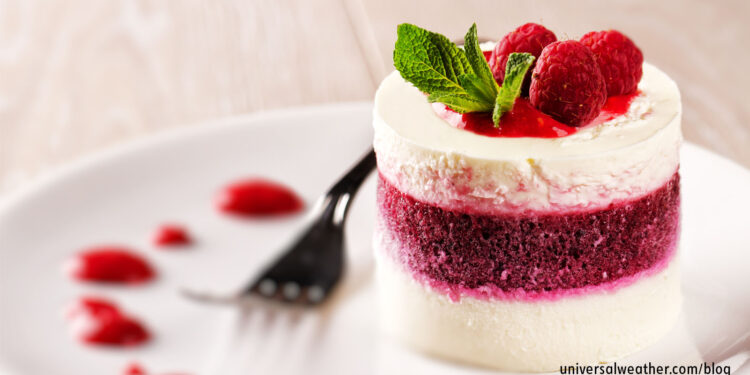In-flight Catering and Desserts Onboard: Preparation Aloft

This is a post by author Richard Peterson. Richard is the Manager of Flight Attendant Services for Air Culinaire Worldwide®, with a headquartered kitchen in Tampa, Florida. Air Culinaire Worldwide has kitchens in Aspen; Boston; Chicago; Dallas; Denver; Las Vegas; London; Long Beach; Miami; New York; Paris; San Francisco; San Jose; Seattle; Van Nuys; West Palm Beach; and Washington, D.C. In addition, Air Culinaire Worldwide provides in-flight catering services at airports around the world via hundreds of catering partners. Richard is an expert in catering for business aviation and can be contacted at richardpeterson@airculinaire.com.
This business aviation blog post continues from our article last week, entitled “In-flight Catering and Desserts Onboard: Maximizing the Passenger Experience.”
Last week, I covered selecting the right dessert. Now let’s talk about in-flight preparation. It’s very important to first be mindful of available flight and service times to avoid challenging yourself with a complex dessert presentation that may not be best for a short flight. Even on shorter legs, however, there are ways to enhance the in-flight dessert experience.
The following is an overview of what you need to know for in-flight prep:
1. Consider sauces and new flavors
These days, there’s a plethora of dessert sauces: papaya coulee to sour cherry chutneys and even white truffle oils that can be added to tarts to enhance taste. Introducing an acid – such as a sherry vinegar reduction – can give the dessert a new and unique taste profile. To amplify the taste of simple chocolate cake, consider adding pink Himalayan salt or a plum sherry reduction. There’s much that a creative flight attendant can do, depending on the passenger palette, to enhance the airborne dessert experience.
2. Items to have onboard
Onboard catering enhancement kits – containing selections of vinegars, salts, and oils along with a garnish kit – may be deployed to enhance the passenger dessert experience. The key is not to do anything that may conflict or degrade the dessert flavor. Your caterer can provide information on pairing of certain ingredients – what works and what does not work.
3. Serving individual or bulk desserts
Many operators, particularly on flights without flight attendants, prefer to order pre-plated individual dessert items. On larger aircraft with more passengers, it may make sense to order whole pies and cakes and plate these onboard. And, as many passengers are more health-conscious these days, it’s increasingly important to consider healthy dessert options which can be added to a platter.
4. Dealing with an aircraft cabin environment
Remember that an aircraft cabin is a dry and arid environment. If a cake is not wrapped tightly or is unpacked too early, it will become dry very fast. For something crisp like an eclair, don’t put it in the refrigerator as it will soak up moisture. A traditional Greek baklava will lose crispiness in a refrigerator. It should be tightly wrapped and placed on a counter rather than put in the fridge.
5. Some desserts do not translate well to an aircraft cabin
Anything flambe should be avoided due to risks associated with open flames. Likewise, creme brulee does not work well onboard an aircraft as it requires an open flame (or blowtorch) to create/maintain a crisp sugar crust. Souffles are doable but difficult to create successfully at FL410. Fried items pose challenges as they tend to lose crispiness aloft. If you’re re-heating fried items, always remove the container lid during the re-heating stage. Ice cream presentations can also be challenging aloft. It’s best to use dry ice for successful ice cream storage. Some desserts require longer preparation times than others. If your flight is not long enough, the planned dessert may not translate well.
6. Heating mechanism considerations
While any onboard heating mechanism will work for re-heating a dessert, you may need to make adjustments to the heating element and/or product. Anything you’re heating with low moisture content – such as a pie crust – should be re-heated in an oven. For high-moisture content desserts – such as bread puddings and cobblers – a microwave works better than an oven. Toffee or chocolate sauce should also be heated in a microwave as it’s easier to control the end result. Your in-flight caterer can provide tips on heating element know-how.
Conclusion
It’s always good practice to have a range of shelf stable-items onboard – especially if there are passenger allergy/food restrictions not known prior to flight. Consider making the investment in a dessert garnish fly-away kit. This does not take up a lot of space but will enhance dessert service and presentation aloft.
Questions?
If you have any questions about this article or have other questions about in-flight catering, contact me at richardpeterson@airculinaire.com.




